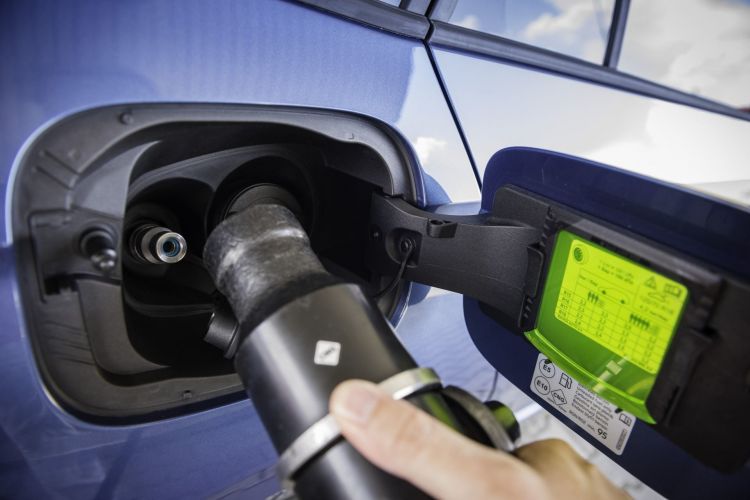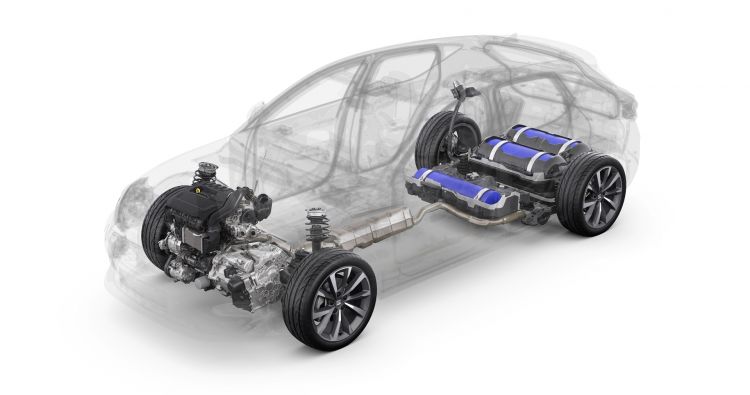The European Union is determined to ban the sales of any diesel, gasolineand with an internal combustion engine in general, which includes hybrids and plug-in hybrids, in 2035.
In recent months we have already talked to you about how the European Union has left some doors open, such as neutral internal combustion engines, which would work using only and exclusively neutral fuels, which are generally alternatives similar to the diesel or gasoline that are manufactured through processes that reduce or avoid CO emissions2 equivalent to those that will be generated in its combustion.
But today we will talk about gas. And it is that at a time when international circumstances have led the European Union to try to reduce its dependence on gas, Why could this be one of the most suitable solutions to continue selling internal combustion cars in 2035?
Gas, together with other neutral fuels with properties similar to gasoline and diesel, could be a solution to reduce the carbon footprint and an alternative beyond 2035
Neither diesel nor gasoline, the future could be gas
Just as processes already exist to produce neutral fuels similar to gasoline and diesel, so too it is possible to produce “green” gaswith properties similar to what we currently know as natural gas, neutral. As with other neutral fuels, the production of gas from renewable, or neutral, sources is also costly in energy and economic terms, and scaling its production to the level of supply that would require the complete replacement of what we call natural gas, a hydrocarbon of fossil, it would be a challenge of colossal magnitude.
Even so, the production of gas from renewable or neutral sources could be a solution to totally or partially avoid emissions from some of the human activities that contribute the most to climate change, such as livestock. Livestock production chains contribute significantly to greenhouse gas emissions, especially due to their methane emissions, whose contribution to climate change is 25 times higher than that of CO2 (EPA); nitrous oxide; and carbon dioxide (FAO).
And a part of these emissions could be transformed into gas of renewable origin, through the processing and filtering of residues from livestock or agriculture, or even organic matter discarded by the food industry. Producing a gas that, in turn, could be used to produce other alternative neutral fuels to gasoline or diesel, transported with relative ease and directly used in internal combustion cars.
This could be the ideal outlet for industries responsible for the emission of a good part of the emissions generated by human activity, such as livestock.
Gas cars yes, but of renewable origin
Gas cars are not a rarity. Currently there are quite a few bifuel cars on the market, which run interchangeably with gasoline or LPG (liquefied petroleum gas), being a really recommendable option due to cost per kilometer and for having an ECO label. There are also bifuel options that work interchangeably with gasoline or CNG (compressed natural gas), but we do not recommend the latter due to the uncertainty regarding CNG, the lack of availability of service stations to refuel it and because most of the options available in the market use very small gasoline tanks, which limits their possibilities in these circumstances.
These bifuel vehicles, both LPG and CNG, receive the ECO label because their emissions are considered less harmful than those generated by the combustion of diesel and gasoline and the reduction in greenhouse effect emissions could reach up to 13-18% (Cummins). In any case, if the aim is to significantly reduce or even neutralize greenhouse gas emissions, the best option would undoubtedly be to use gases of neutral origin, such as those described in this article, and not of fossil origin.
As we told you, Neutral gas from renewable sources has as many advantages, if not more, than other synthetic neutral fuels with properties similar to diesel or gasoline. They can be easily transported by land, sea, and pipelines, independently, or mixed with other natural gases of fossil origin, in what we would call a gray, partially renewable, or partially neutral gas.
There are many of us who continue to believe that hydrogen will be the energy of the future. But it is also important to remember that hydrogen is also expensive to produce, in energy and economic terms, if you are trying to produce green or renewable hydrogen. And what is even more important, it presents greater challenges for its transport to the point of consumption.







